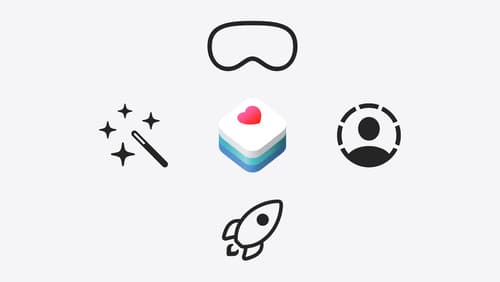How can improve SwiftUI performance?
Asked on 2024-08-09
1 search
To improve SwiftUI performance, you can leverage several new features and techniques introduced at WWDC 2024:
-
Precompile Shaders: SwiftUI now allows you to precompile shaders before their first use, which helps avoid frame drops caused by lazy shader compilation. This can significantly improve the performance of your graphics rendering. For more details, you can refer to the session What’s new in SwiftUI.
-
Scroll View Enhancements: SwiftUI provides new APIs for fine-grained control over scroll views. You can now react to changes in content, offsets, and content size more performantly using the
onScrollGeometryChangemodifier. This helps in creating smooth scrolling experiences and can improve the overall performance of your app. More information can be found in the session What’s new in SwiftUI. -
Swift 6 Language Mode: The new Swift 6 language mode enables compile-time data race safety, which can help in writing more efficient and safer code. SwiftUI has improved its APIs to make it easier to adopt this new language mode, which can lead to better performance. This is discussed in the session What’s new in SwiftUI.
-
Custom Metal Shaders: For high-performance imperative drawing, you can use custom Metal shaders directly in SwiftUI views. This allows for more efficient rendering and can be particularly useful for complex visual effects. This is covered in the session SwiftUI essentials.
-
Efficient Animations: SwiftUI's animation system builds on data-driven updates, which can be optimized for performance. By using animations effectively and customizing transitions, you can ensure that your app runs smoothly. This is explained in the session SwiftUI essentials.
-
Interoperability with UIKit and AppKit: SwiftUI now has better interoperability with UIKit and AppKit, allowing you to set up animations on these views and drive them with SwiftUI. This can help in optimizing performance when using mixed UI frameworks. This is discussed in the session Platforms State of the Union.
By utilizing these new features and techniques, you can significantly improve the performance of your SwiftUI applications.

Get started with HealthKit in visionOS
Discover how to use HealthKit to create experiences that take full advantage of the spatial canvas. Learn the capabilities of HealthKit on the platform, find out how to bring an existing iPadOS app to visionOS, and explore the special considerations governing HealthKit during a Guest User session. You’ll also learn ways to use SwiftUI, Swift Charts, and Swift concurrency to craft innovative experiences with HealthKit.

What’s new in SwiftUI
Learn how you can use SwiftUI to build great apps for any Apple platform. Explore a fresh new look and feel for tabs and documents on iPadOS. Improve your window management with new windowing APIs, and gain more control over immersive spaces and volumes in your visionOS apps. We’ll also take you through other exciting refinements that help you make expressive charts, customize and layout text, and so much more.

Platforms State of the Union
Discover the newest advancements on Apple platforms.
